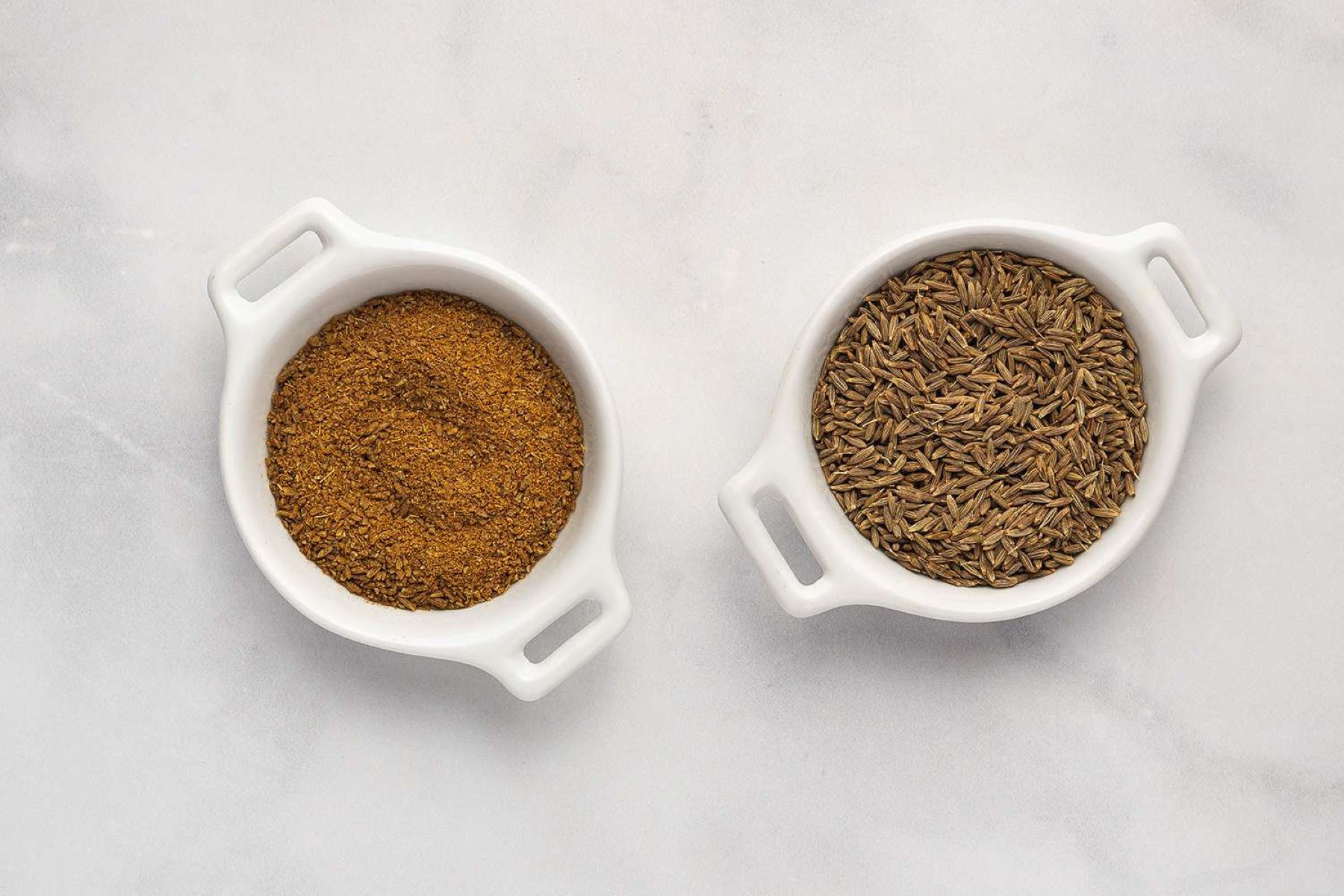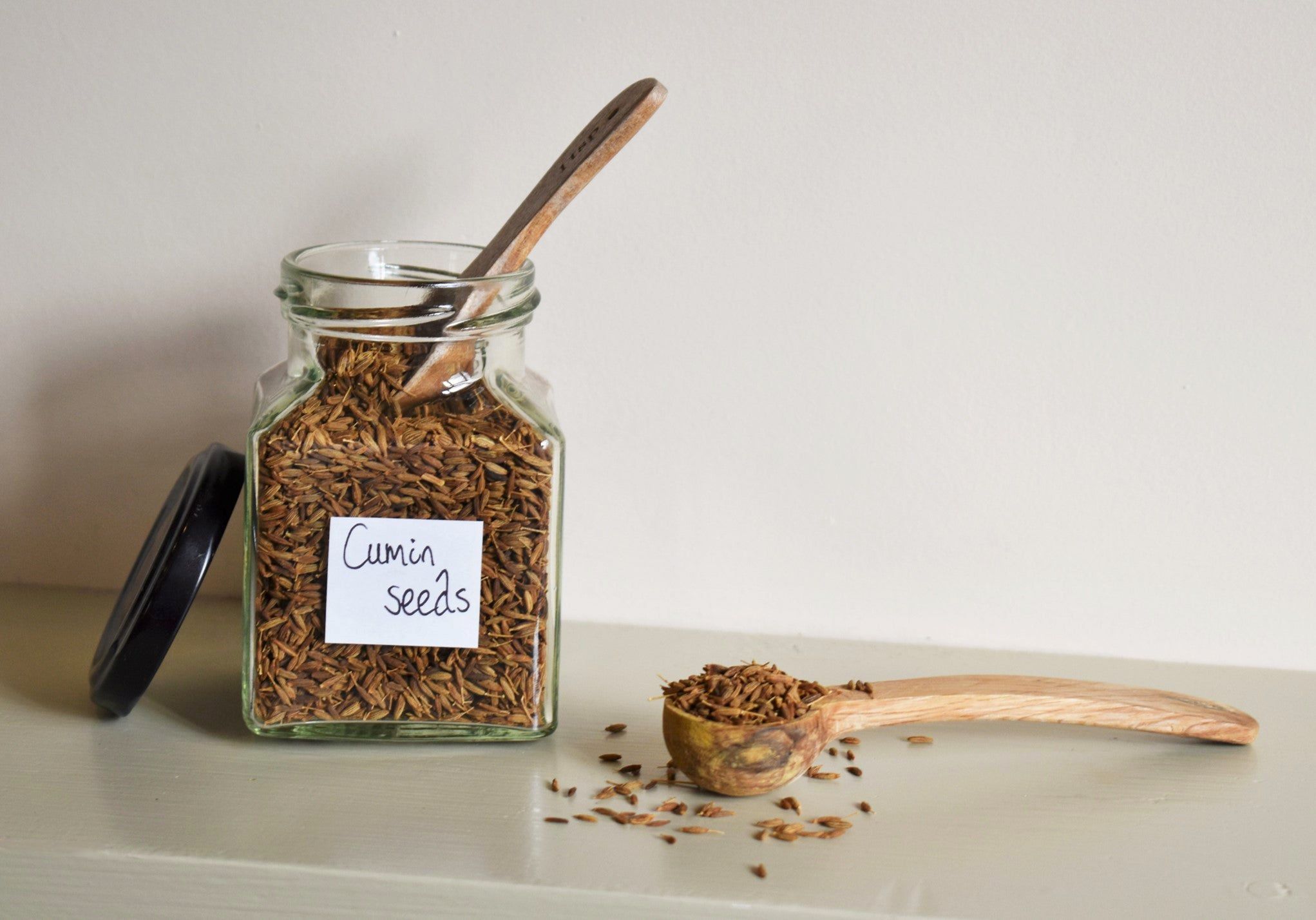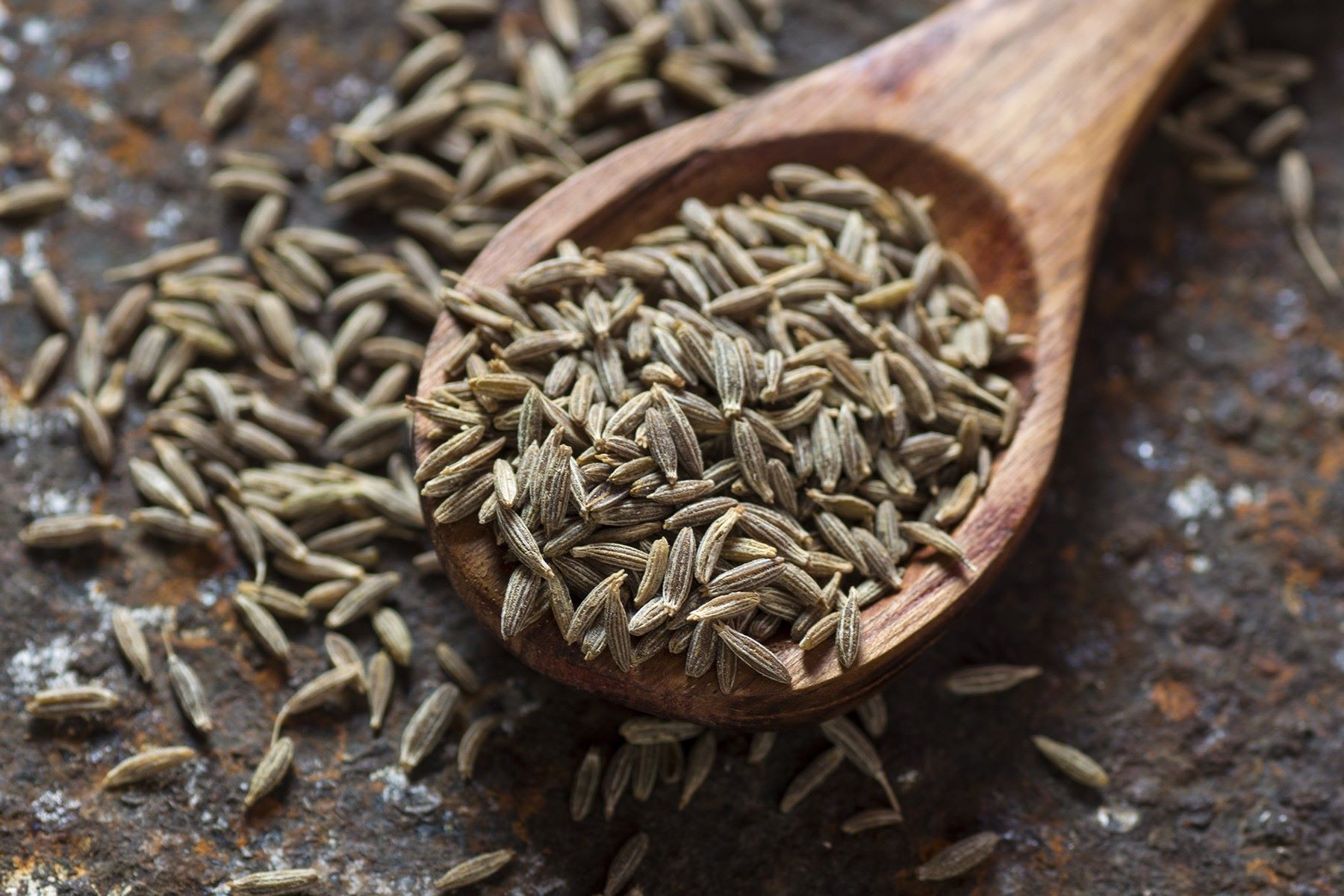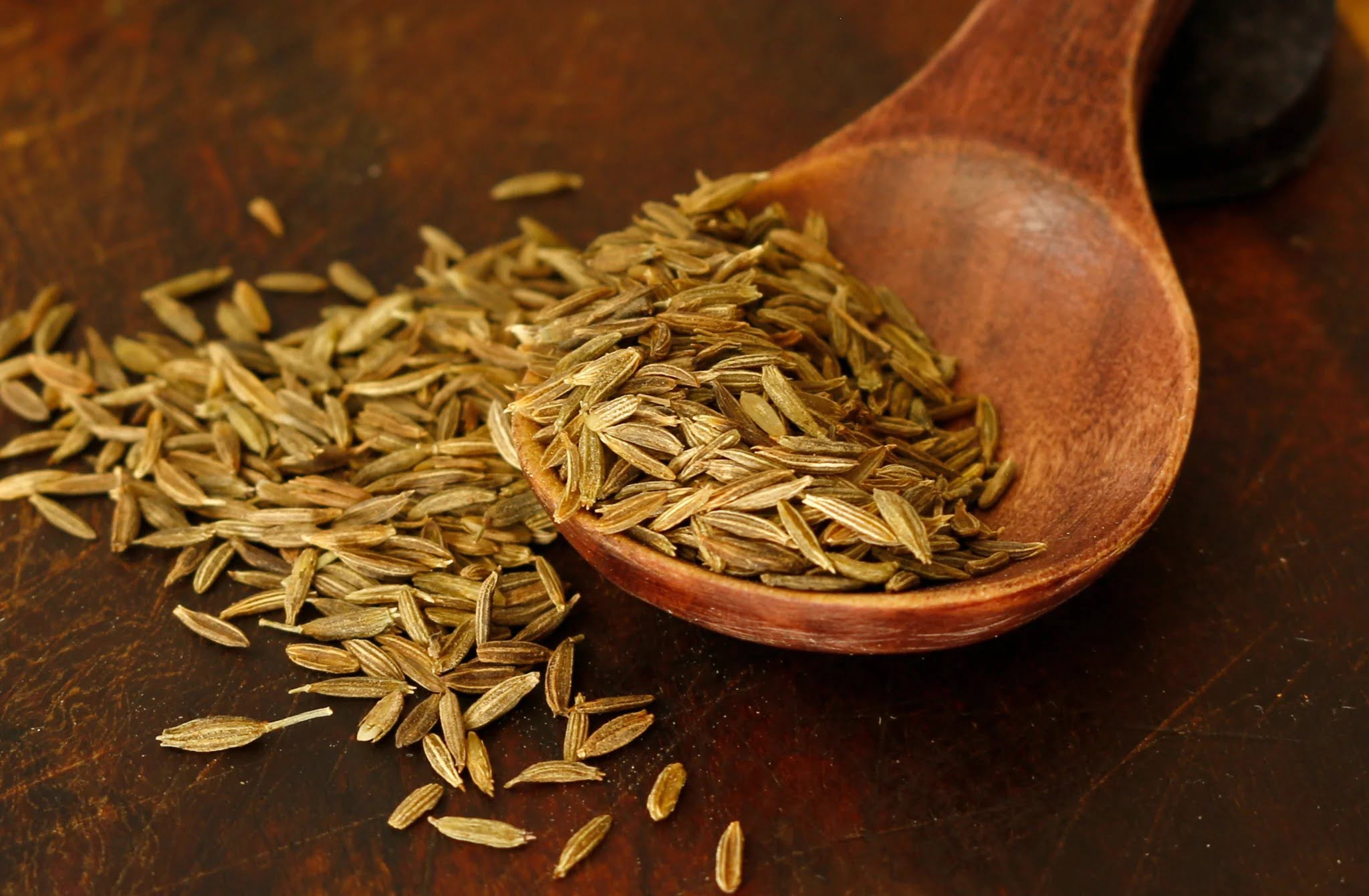Home>Garden Essentials>Everything You Should Know About Cumin Seeds And Ground Cumin


Garden Essentials
Everything You Should Know About Cumin Seeds And Ground Cumin
Modified: August 17, 2024
Discover how much ground cumin can be made from just 1 tablespoon of cumin seeds. Find out the conversion ratio and tips for using fresh ingredients from your garden.
(Many of the links in this article redirect to a specific reviewed product. Your purchase of these products through affiliate links helps to generate commission for Storables.com, at no extra cost. Learn more)
Introduction
Welcome to the wonderful world of spices! If you’re an aspiring chef or an avid home cook, chances are you’ve encountered cumin in your culinary adventures. This aromatic spice is known for its warm and earthy flavor, and it adds a delightful depth to a wide range of dishes. Whether you’re whipping up a hearty chili, spicing up roasted vegetables, or concocting a flavorful curry, cumin is a versatile staple that deserves a place in every kitchen.
Have you ever come across a recipe that calls for a certain amount of cumin seeds, only to realize you only have ground cumin in your pantry? Or vice versa? Determining the equivalent measurement of cumin seeds to ground cumin can be a bit perplexing, but fear not! In this article, we’ll dive into the details of cumin seeds and ground cumin, discuss the conversion ratio, and provide some useful tips for using both in your culinary creations.
Key Takeaways:
- Ground cumin is about 1.5 times stronger than cumin seeds. So, for every teaspoon of cumin seeds, you’d need 1.5 teaspoons of ground cumin. But feel free to adjust based on your taste!
- Factors like freshness, quality, and personal preference can affect the amount of cumin seeds or ground cumin needed. Experiment, measure accurately, and toast your cumin seeds for maximum flavor!
Read more: Everything You Need To Know About Ladders
Understanding Cumin Seeds and Ground Cumin
Before we delve into the conversion ratio, let’s first understand the difference between cumin seeds and ground cumin. Cumin seeds are the dried seeds of the Cuminum cyminum plant, which belongs to the parsley family. They are small, elongated, and typically brown in color. Ground cumin, on the other hand, is made by grinding the cumin seeds into a fine powder. Both forms of cumin carry a robust flavor profile, but the intensity and texture may differ.
Cumin seeds are revered for their strong aroma and distinct taste. When toasted or heated, they release a rich and nutty fragrance that can elevate any dish. Ground cumin, having a larger surface area, tends to have a more concentrated flavor. It is widely used in spice blends, marinades, and rubs to infuse dishes with its pungent and warming notes.
Both cumin seeds and ground cumin are easily accessible in most grocery stores and spice markets. However, it’s important to note that cumin is best when it’s fresh. So, if you have a preference or the opportunity, choosing whole cumin seeds and grinding them yourself before use can enhance the aroma and flavor of your dishes.
Conversion Ratio of Cumin Seeds to Ground Cumin
When it comes to converting cumin seeds to ground cumin, there isn’t an exact science due to factors such as the size and shape of the seeds, as well as variations in grinding methods. However, as a general guideline, you can use the 1:1.5 ratio. This means that for every teaspoon of cumin seeds, you would need approximately 1 and a half teaspoons of ground cumin.
While this ratio can serve as a starting point, it’s important to remember that personal preference plays a significant role. If you prefer a more intense cumin flavor, you might want to increase the amount of ground cumin slightly. Conversely, if you prefer a milder flavor, you can reduce the quantity of ground cumin. Experimenting with different ratios will help you find the perfect balance that suits your taste buds.
It’s worth noting that if a recipe calls for toasting the cumin seeds before grinding, the flavor profile may change, and the conversion ratio might deviate slightly. Toasting cumin seeds enhances their aroma and brings out a nutty undertone. In such cases, it’s recommended to follow the recipe instructions regarding pre-toasting and grinding to achieve the desired flavor profile.
Ultimately, the conversion ratio of cumin seeds to ground cumin is not set in stone. It’s a guideline that can be adjusted based on personal preference, the specific recipe, and the quality and freshness of the spices used. It’s always a good idea to taste and adjust seasoning as you cook to ensure the flavors are balanced to your liking.
Factors Affecting the Conversion Ratio
While the 1:1.5 conversion ratio can be a helpful starting point, it’s important to consider several factors that can affect the actual amount of cumin seeds needed to achieve the desired flavor when using ground cumin.
1. Freshness: The freshness of both the cumin seeds and the ground cumin can impact the flavor. Freshly ground cumin will have a more potent flavor compared to older ground cumin. Similarly, fresh cumin seeds will release more aroma and flavor when ground.
2. Brand and quality: Different brands may have slight variations in the intensity and flavor of their cumin seeds and ground cumin. Consider the quality of the spices you’re using, as higher quality spices tend to have a stronger flavor profile.
3. Grinding method: How the cumin seeds are ground can affect the texture and flavor of the resulting ground cumin. Grinding the seeds in a mortar and pestle can yield a coarser texture, while using a spice grinder can produce a fine and powdery consistency.
4. Toasting: Toasting the cumin seeds before grinding can enhance their flavor. The toasting process adds a smoky and nutty undertone to the spice. If the recipe calls for toasted cumin seeds, the resulting ground cumin may have a slightly different flavor profile, which could impact the conversion ratio.
5. Personal preference: Everyone’s taste buds are unique, and personal preferences for the intensity and flavor of cumin can vary. Some individuals may enjoy a more pronounced cumin flavor, while others may prefer a milder taste. Adjusting the conversion ratio based on personal preference can help tailor the dish to your liking.
Considering these factors, it’s important to view the conversion ratio as a starting point rather than an absolute rule. Tasting and adjusting the amount of cumin seeds or ground cumin as you cook will help you achieve the desired flavor and balance in your dishes.
1 tablespoon of cumin seeds equals approximately 2 1/2 teaspoons of ground cumin. Grinding your own seeds will result in a fresher, more flavorful spice.
Measuring Cumin Seeds and Ground Cumin
Accurate measurement of cumin seeds and ground cumin is crucial to ensure the right balance of flavors in your dishes. While there are standard measuring tools available, such as teaspoons and tablespoons, it’s important to note that the size and shape of cumin seeds may vary, affecting the volume they occupy.
When measuring cumin seeds, it’s recommended to use a measuring spoon specifically designed for spices. These spoons are typically narrow and long, allowing you to reach into spice jars and scoop out the desired amount with ease. Carefully fill the measuring spoon with cumin seeds, leveling it off to ensure an accurate measurement.
When working with ground cumin, a standard measuring spoon can be used. However, it’s important to account for the fact that ground spices tend to settle and compact over time. To ensure an accurate measurement, fluff up the ground cumin with a spoon or shake the container gently before spooning it into the measuring spoon. Level off the excess using the back of a knife or a straight edge.
If you don’t have measuring spoons on hand, you can also estimate the amount of cumin seeds or ground cumin using common kitchen items. For example, one teaspoon of cumin seeds is roughly equivalent to a pinch between your thumb and forefinger. Similarly, one tablespoon of cumin seeds can be approximated by using the cap of a standard-sized water bottle.
Remember, when measuring cumin seeds or ground cumin, it’s essential to be precise, especially when following a recipe. Small variations in quantities can affect the overall flavor of the dish. If you’re unsure about the measurement or want to achieve consistent results, it’s best to use a reliable kitchen scale to weigh out the desired amount of cumin seeds or ground cumin.
By accurately measuring your cumin seeds and ground cumin, you can ensure that the flavors of your dishes are perfectly balanced, allowing the robust aroma and taste of cumin to shine through.
Tips for Using Cumin Seeds and Ground Cumin in Recipes
Now that you have a better understanding of cumin seeds and ground cumin, let’s explore some tips for using these flavorful spices in your culinary creations:
- Toasting Cumin Seeds: Toasting cumin seeds before using them can enhance their flavor. Heat a dry skillet over medium heat and add the cumin seeds. Toast them for a few minutes, stirring occasionally until they become fragrant and slightly darker in color. Be careful not to burn them, as it can result in a bitter taste.
- Enhancing Ground Cumin: If you’re using ground cumin, you can intensify its flavor by dry-roasting it for a short time. Heat a skillet over low heat, add the ground cumin, and gently stir it for a minute or two until it becomes aromatic. This technique helps release the essential oils and enhances the overall flavor.
- Combining Cumin with Other Spices: Cumin pairs exceptionally well with other spices like coriander, paprika, turmeric, and chili powder. Experiment with different spice combinations to create unique flavor profiles in your recipes.
- Using Cumin in Sauces and Marinades: Cumin adds a lovely depth to sauces and marinades. Whether you’re making a zesty salsa, a tangy barbecue sauce, or a flavorful curry paste, incorporating cumin can elevate the taste and aroma of your creations.
- Sprinkling Cumin Seeds as a Topping: Toasted cumin seeds make a fantastic topping for salads, soups, and roasted vegetables. The crunchy texture and nutty flavor they provide can add a delightful twist to your favorite dishes.
- Infusing Oil with Cumin: Heat a small amount of oil in a skillet and add cumin seeds. Allow them to sizzle and release their aroma, then strain the oil. This infused oil can be used as a flavorful base for stir-fries, dressings, and marinades.
- Experimenting with Cumin in Baked Goods: Cumin might not be the first spice that comes to mind when baking, but it can add an interesting twist to bread, biscuits, and even desserts. Try incorporating a small amount of cumin into your favorite baked goods for a touch of warmth and complexity.
Remember, these tips are just starting points, and the possibilities with cumin seeds and ground cumin are endless. Feel free to explore, experiment, and let your creativity shine in the kitchen. Whether you’re a seasoned chef or an adventurous home cook, cumin can be a valuable addition to your spice collection, offering a delicious and aromatic journey in every dish.
Conclusion
Cumin seeds and ground cumin are essential ingredients in many cuisines around the world. Understanding their characteristics, conversion ratios, and proper usage can elevate your dishes and add a distinctive flavor profile to your cooking. While the conversion ratio of cumin seeds to ground cumin can serve as a helpful guideline, it’s important to consider factors such as freshness, quality, grinding methods, and personal preference when determining the amount needed.
Accurate measuring of cumin seeds and ground cumin is crucial for achieving well-balanced flavors in your recipes. Whether you use measuring spoons or estimate with common kitchen items, precision is key to ensuring consistent results. And don’t forget to toast your cumin seeds to unlock their full flavor potential!
While we’ve covered basic tips for using cumin seeds and ground cumin, don’t be afraid to experiment and get creative in the kitchen. Combine cumin with other spices, infuse oil, and try it in unexpected dishes. The versatility of cumin allows you to explore various flavor profiles and create unique culinary experiences.
So, the next time you reach for cumin seeds or ground cumin, embrace the opportunity to enhance your dishes with the warm and earthy essence they offer. Whether you’re preparing a comforting stew, a vibrant curry, or a zesty salsa, cumin’s aromatic presence will surely leave your taste buds satisfied and longing for more.
Happy cooking!
Frequently Asked Questions about Everything You Should Know About Cumin Seeds And Ground Cumin
Was this page helpful?
At Storables.com, we guarantee accurate and reliable information. Our content, validated by Expert Board Contributors, is crafted following stringent Editorial Policies. We're committed to providing you with well-researched, expert-backed insights for all your informational needs.















0 thoughts on “Everything You Should Know About Cumin Seeds And Ground Cumin”